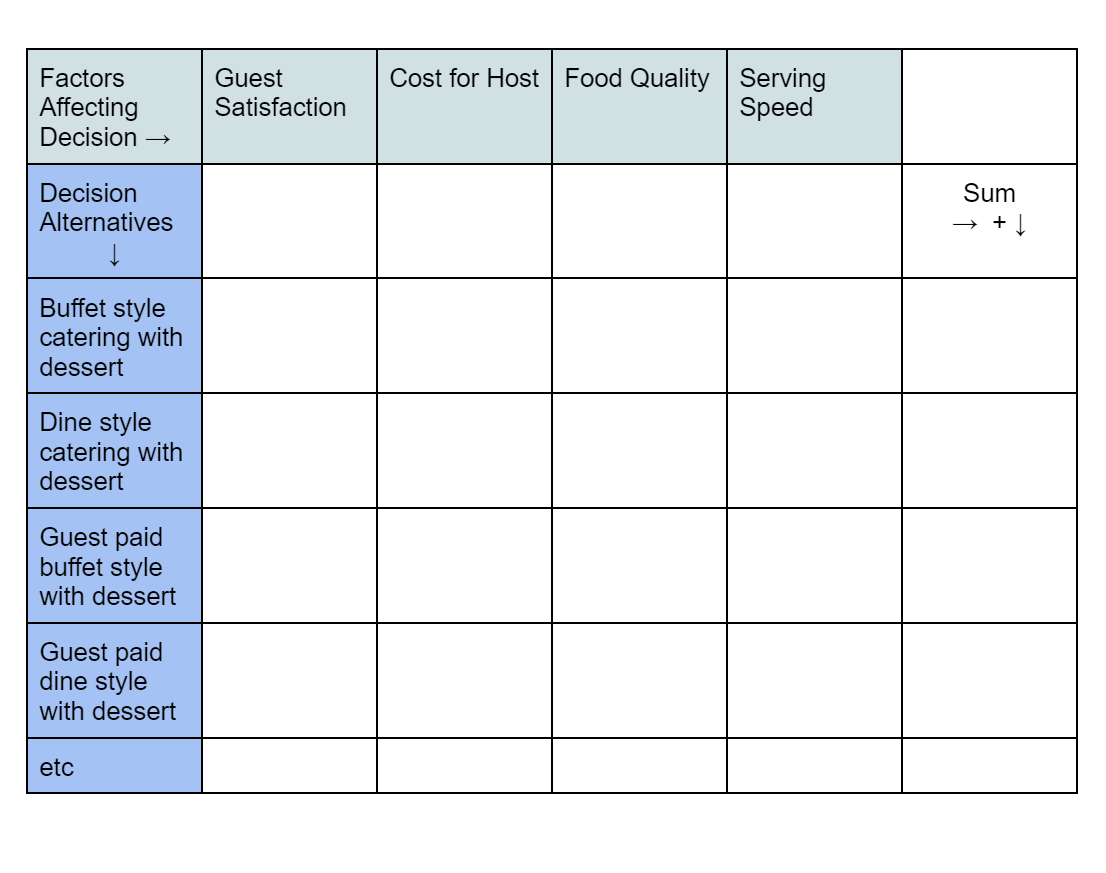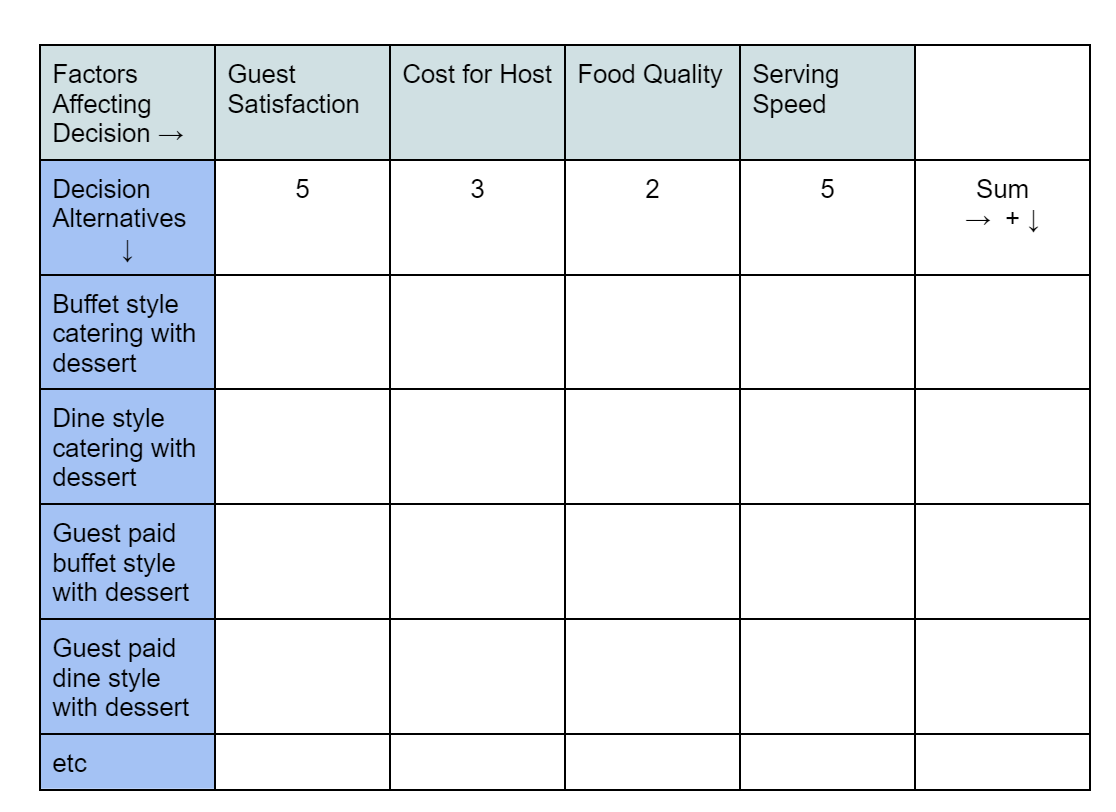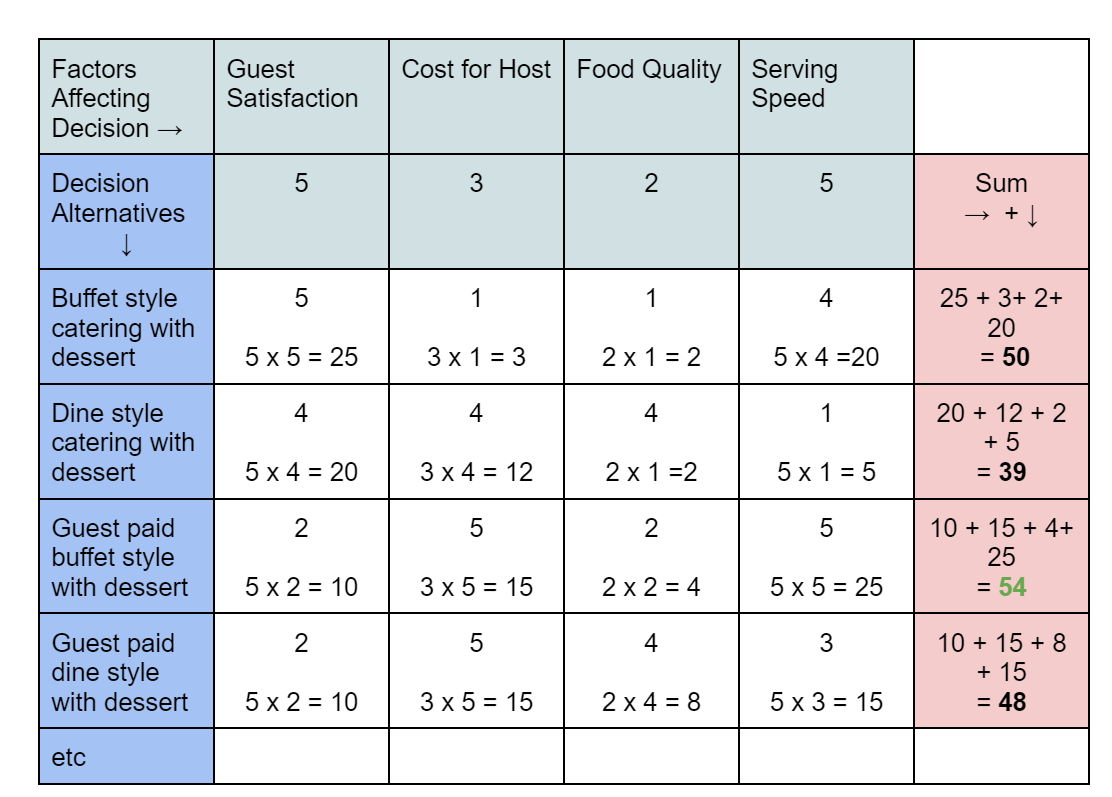WHAT IS A DECISION MATRIX?
Average Decision Matrix also known as: pugh matrix, decision grid, problem matrix, problem selection matrix, opportunity analysis, solution matrix, and criteria-based matrix.
The Decision Matrix is a tool that can be used in any occasion and is often used in the field of business to help make difficult decisions. The decision matrix is a decision making tool that evaluates a list of options to help determine the best option that has the lowest risk.
Even though the decision matrix is generally a useful tool, there are some instances where you should avoid using the pugh matrix as it might have adverse effects on your decision making process.
WHEN TO USE A DECISION MATRIX?
When to use:
-
You need to narrow down your options to 1 final choice.
-
You need to base the decision on many different criteria.
-
You need to select the best course of action.
-
You need to prioritize tasks/ opportunities.
-
You need to consider outcomes beyond a pro’s and con’s list from the decision making process.
When not to use:
-
If there are less than 3 variables to your decision.
-
If you are unsure about the criteria options. It means that you might value one option more than the other which may not be reflected clearly in your ranking process.
-
When there is a larger disparity between the weighted scores of the criteria. One could be considered much more important than the other criteria. However, because the scoring is only limited from 1-5, it means that this importance may not be reflected.
-
When the values assigned to each option need to be based on quantitative measurements. Values assigned to each option are picked arbitrarily using this method, which means that it might not reflect quantitative values in your research.
HOW TO USE A DECISION MATRIX?
1. The decision alternatives should be written as rows and the relevant factors affecting the decision should be written as columns.

2. Rank the factors affecting the decision based on weight. If this decision is unweighted, you can skip this step.*:
a. If there are less than 3 variables to your decision.

3. Rank each decision alternatives with the factors affecting the decision in mind. Unfavorable factors rank the lowest and favorable factors rank the highest.
a. ex) High cost = 1 Low cost = 5
b. Low Importance = 1 High Importance = 5

In this case, the best decision is to get guests to pay for a buffet style dinner with dessert because it’s sum was the largest number.
This decision matrix can be easily made by hand with pen and paper. However, many programs offer decision matrix templates for convenience.
We have also offered a FREE decision matrix template for SLPs deciding on the best equipment to buy here.
